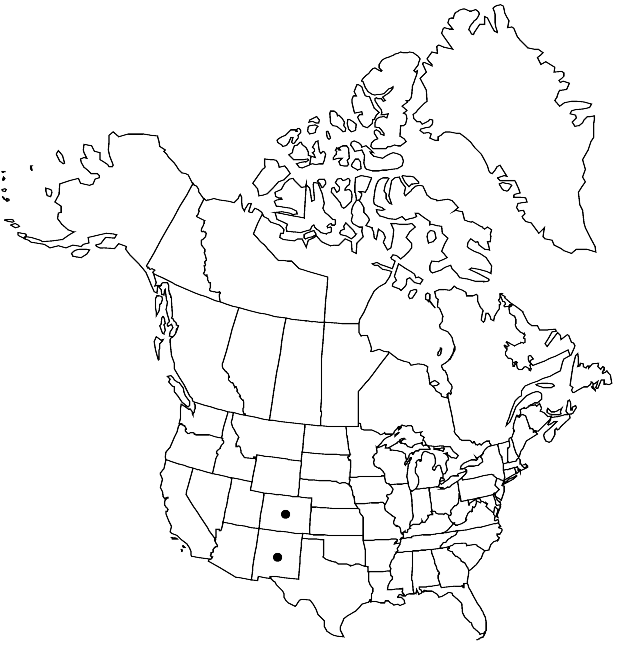Physaria floribunda
Bull. Torrey Bot. Club 28: 279. 1901.
Perennials; caudex branched, (cespitose); (silvery) pubescent throughout, trichomes several-rayed, rays mostly furcate, (arms of unequal lengths, finely tuberculate). Stems several from base, erect or lateral decumbent, (unbranched), 1–2 dm. Basal leaves: (petiole usually winged); blade broadly oblanceolate, 3–8 cm, margins usually dentate or pinnatifid, rarely subentire, (terminal lobe acute or obtuse, not rounded). Cauline leaves: blade spatulate to linear-oblanceolate, 1–3 cm, margins usually entire, rarely toothed, (apex acute). Racemes loose (and greatly elongated in fruit) to congested. Fruiting pedicels (recurved), 6–15 mm. Flowers: sepals linear-oblong, 5–7 mm; petals spatulate, 9–11 mm. Fruits (usually pendent on arching pedicels, less frequently widely divergent), irregular in shape, (base obtuse or slightly cordate, apex deeply and broadly notched), not strongly inflated, 8–11 × 8–12 mm, (papery); valves retaining seeds after dehiscence; replum linear-oblong, constricted, 2.5–4 mm, as wide as or wider than fruit, apex obtuse; ovules 4 per ovary; style 5–8 mm. Seeds flattened.
Distribution

Colo., N.Mex.
Discussion
Subspecies 2 (2 in the flora).
Selected References
None.
Key
| 1 | Fruit valves inflated, membranous; trichomes appressed. | Physaria floribunda subsp. floribunda |
| 1 | Fruit valves usually not inflated, coriaceous; trichomes slightly spreading. | Physaria floribunda subsp. osterhoutii |